Structures and Dynamics of Native-State Transmembrane Protein Targets and Bound Lipids
Abstract
1. Introduction
2. Native GPCR–Lipid Complexes
3. Microbial Rhodopsins in Native Nanodiscs
4. Cryo-Electron Microscopy of Multisubunit Complexes in Native Nanodiscs
5. Recapitulating Function in Polymer-Stabilized Memteins as Exemplified by A2AR
6. Polymer Design for Native Nanodiscs
7. Conclusions
Author Contributions
Funding
Institutional Review Board Statement
Informed Consent Statement
Data Availability Statement
Acknowledgments
Conflicts of Interest
References
- Stefanski, K.M.; Russell, C.M.; Westerfield, J.M.; Lamichhane, R.; Barrera, F.N. PIP2 promotes conformation-specific dimerization of the EphA2 membrane region. J. Biol. Chem. 2021, 296, 100149. [Google Scholar] [CrossRef] [PubMed]
- Overduin, M.; Cheever, M.L.; Kutateladze, T.G. Signaling with phosphoinositides: Better than binary. Mol. Interv. 2001, 1, 150–159. [Google Scholar] [PubMed]
- Sato, T.K. Location, location, location: Membrane targeting directed by PX domains. Science 2001, 294, 1881–1885. [Google Scholar] [CrossRef]
- Knowles, T.J.; Finka, R.; Smith, C.; Lin, Y.-P.; Dafforn, T.; Overduin, M. Membrane proteins solubilized intact in lipid containing nanoparticles bounded by styrene maleic acid copolymer. J. Am. Chem. Soc. 2009, 131, 7484–7485. [Google Scholar] [CrossRef]
- Esmaili, M.; Acevedo-Morantes, C.; Wille, H.; Overduin, M. The effect of hydrophobic alkyl sidechains on size and solution behaviors of nanodiscs formed by alternating styrene maleamic copolymer. Biochim. Biophys. Acta Biomembr. 2020, 1862, 183360. [Google Scholar] [CrossRef]
- Ravula, T.; Ramadugu, S.K.; Di Mauro, G.; Ramamoorthy, A. Bioinspired, size-tunable self-assembly of polymer–lipid bilayer nanodiscs. Angew. Chem. Int. Ed. 2017, 56, 11466–11470. [Google Scholar] [CrossRef] [PubMed]
- Ravula, T.; Hardin, N.Z.; Ramadugu, S.K.; Ramamoorthy, A. pH Tunable and divalent metal ion tolerant polymer lipid nanodiscs. Langmuir 2017, 33, 10655–10662. [Google Scholar] [CrossRef] [PubMed]
- Lindhoud, S.; De Carvalho, V.D.R.; Pronk, J.W.; Aubin-Tam, M.-E. SMA-SH: Modified styrene–maleic acid copolymer for functionalization of lipid nanodiscs. Biomacromolecules 2016, 17, 1516–1522. [Google Scholar] [CrossRef] [PubMed]
- Yang, L.; Catalano, C.; Xu, Y.; Qiu, W.; Zhang, D.; McDermott, A.; Guo, Y.; Blount, P. A native cell membrane nanoparticles system allows for high-quality functional proteoliposome reconstitution. BBA Adv. 2021, 1, 100011. [Google Scholar] [CrossRef]
- Hall, S.C.L.; Tognoloni, C.; Charlton, J.; Bragginton, É.C.; Rothnie, A.J.; Sridhar, P.; Wheatley, M.; Knowles, T.J.; Arnold, T.; Edler, K.J.; et al. An acid-compatible co-polymer for the solubilization of membranes and proteins into lipid bilayer-containing nanoparticles. Nanoscale 2018, 10, 10609–10619. [Google Scholar] [CrossRef] [PubMed]
- Ravula, T.; Hardin, N.Z.; Ramadugu, S.K.; Cox, S.J.; Ramamoorthy, A. Formation of pH-resistant monodispersed polymer-lipid nanodiscs. Angew. Chem. Int. Ed. 2018, 57, 1342–1345. [Google Scholar] [CrossRef] [PubMed]
- Esmaili, M.; Brown, C.J.; Shaykhutdinov, R.; Acevedo-Morantes, C.; Wang, Y.L.; Wille, H.; Gandour, R.D.; Turner, S.R.; Overduin, M. Homogeneous nanodiscs of native membranes formed by stilbene–maleic-acid copolymers. Nanoscale 2020, 12, 16705–16709. [Google Scholar] [CrossRef] [PubMed]
- Smith, A.A.; Autzen, H.E.; Faust, B.; Mann, J.L.; Muir, B.W.; Howard, S.; Postma, A.; Spakowitz, A.J.; Cheng, Y.; Appel, E.A. Lipid nanodiscs via ordered copolymers. Chem 2020, 6, 2782–2795. [Google Scholar] [CrossRef]
- Fiori, M.C.; Jiang, Y.; Altenberg, G.A.; Liang, H. Polymer-encased nanodiscs with improved buffer compatibility. Sci. Rep. 2017, 7, 1–10. [Google Scholar] [CrossRef] [PubMed]
- Hardin, N.Z.; Ravula, T.; Di Mauro, G.M.; Ramamoorthy, A. Hydrophobic functionalization of polyacrylic acid as a versatile platform for the development of polymer lipid nanodisks. Small 2019, 15, e1804813. [Google Scholar] [CrossRef]
- Yasuhara, K.; Arakida, J.; Ravula, T.; Ramadugu, S.K.; Sahoo, B.; Kikuchi, J.-I.; Ramamoorthy, A. Spontaneous lipid nanodisc fomation by amphiphilic polymethacrylate copolymers. J. Am. Chem. Soc. 2017, 139, 18657–18663. [Google Scholar] [CrossRef] [PubMed]
- Oluwole, A.O.; Danielczak, B.; Meister, A.; Babalola, J.O.; Vargas, C.; Keller, S. Solubilization of membrane proteins into functional lipid-bilayer nanodiscs using a diisobutylene/maleic acid copolymer. Angew. Chem. Int. Ed. 2017, 56, 1919–1924. [Google Scholar] [CrossRef]
- Voskoboynikova, N.; Orekhov, P.; Bozdaganyan, M.; Kodde, F.; Rademacher, M.; Schowe, M.; Budke-Gieseking, A.; Brickwedde, B.; Psathaki, O.-E.; Mulkidjanian, A.; et al. Lipid Dynamics in Diisobutylene-Maleic Acid (DIBMA) Lipid Particles in Presence of Sensory Rhodopsin II. Int. J. Mol. Sci. 2021, 22, 2548. [Google Scholar] [CrossRef] [PubMed]
- Hauser, A.; Attwood, M.M.; Rask-Andersen, M.; Schiöth, H.B.; Gloriam, D.E. Trends in GPCR drug discovery: New agents, targets and indications. Nat. Rev. Drug Discov. 2017, 16, 829–842. [Google Scholar] [CrossRef]
- Bjarnadóttir, T.K.; Gloriam, D.E.; Hellstrand, S.H.; Kristiansson, H.; Fredriksson, R.; Schiöth, H.B. Comprehensive repertoire and phylogenetic analysis of the G protein-coupled receptors in human and mouse. Genomics 2006, 88, 263–273. [Google Scholar] [CrossRef]
- Sriram, K.; Insel, P.A. G Protein-coupled receptors as targets for approved drugs: How many targets and how many drugs? Mol. Pharmacol. 2018, 93, 251–258. [Google Scholar] [CrossRef]
- Insel, P.A.; Sriram, K.; Gorr, M.; Wiley, S.Z.; Michkov, A.; Salmerón, C.; Chinn, A.M. GPCRomics: An approach to discover GPCR drug targets. Trends Pharmacol. Sci. 2019, 40, 378–387. [Google Scholar] [CrossRef] [PubMed]
- Strohman, M.J.; Maeda, S.; Hilger, D.; Masureel, M.; Du, Y.; Kobilka, B.K. Local membrane charge regulates β2 adrenergic receptor coupling to Gi3. Nat. Commun. 2019, 10, 1–10. [Google Scholar] [CrossRef] [PubMed]
- Yen, H.-Y.; Hoi, K.K.; Liko, I.; Hedger, G.; Horrell, M.R.; Song, W.; Wu, D.; Heine, P.; Warne, T.; Lee, Y.; et al. PtdIns(4,5)P2 stabilizes active states of GPCRs and enhances selectivity of G-protein coupling. Nat. Cell Biol. 2018, 559, 423–427. [Google Scholar] [CrossRef] [PubMed]
- Inagaki, S.; Ghirlando, R.; White, J.F.; Gvozdenovic-Jeremic, J.; Northup, J.K.; Grisshammer, R. Modulation of the interaction between neurotensin receptor NTS1 and Gq protein by lipid. J. Mol. Biol. 2012, 417, 95–111. [Google Scholar] [CrossRef]
- Ferré, S. The GPCR heterotetramer: Challenging classical pharmacology. Trends Pharmacol. Sci. 2015, 36, 145–152. [Google Scholar] [CrossRef]
- Costa-Neto, C.M.; Parreiras-E-Silva, L.T.; Bouvier, M. A Pluridimensional view of biased agonism. Mol. Pharmacol. 2016, 90, 587–595. [Google Scholar] [CrossRef] [PubMed]
- Venkatakrishnan, A.J.; Deupi, X.; Lebon, G.; Heydenreich, F.; Flock, T.; Miljus, T.; Balaji, S.; Bouvier, M.; Veprintsev, D.; Tate, C.G.; et al. Diverse activation pathways in class A GPCRs converge near the G-protein-coupling region. Nat. Cell Biol. 2016, 536, 484–487. [Google Scholar] [CrossRef]
- Chaturvedi, M.; Schilling, J.; Beautrait, A.; Bouvier, M.; Benovic, J.L.; Shukla, A.K. Emerging paradigm of intracellular targeting of G protein-coupled receptors. Trends Biochem. Sci. 2018, 43, 533–546. [Google Scholar] [CrossRef] [PubMed]
- Ehrlich, A.T.; Semache, M.; Gross, F.; Da Fonte, D.F.; Runtz, L.; Colley, C.; Mezni, A.; Le Gouill, C.; Lukasheva, V.; Hogue, M.; et al. Biased signaling of the Mu opioid receptor revealed in native neurons. iScience 2019, 14, 47–57. [Google Scholar] [CrossRef]
- Staus, D.P.; Wingler, L.; Pichugin, D.; Prosser, R.S.; Lefkowitz, R.J. Detergent- and phospholipid-based reconstitution systems have differential effects on constitutive activity of G-protein–coupled receptors. J. Biol. Chem. 2019, 294, 13218–13223. [Google Scholar] [CrossRef] [PubMed]
- Palczewski, K.; Kumasaka, T.; Hori, T.; Behnke, C.A.; Motoshima, H.; Fox, B.A.; Le Trong, I.; Teller, D.C.; Okada, T.; Stenkamp, R.E.; et al. Crystal structure of rhodopsin: A G protein-coupled receptor. Science 2000, 289, 739–745. [Google Scholar] [CrossRef] [PubMed]
- Congreve, M.; de Graaf, C.; Swain, N.A.; Tate, C.G. Impact of GPCR structures on drug discovery. Cell 2020, 181, 81–91. [Google Scholar] [CrossRef] [PubMed]
- Chen, Q.; Miller, L.J.; Dong, M. Role of N-linked glycosylation in biosynthesis, trafficking, and function of the human glucagon-like peptide 1 receptor. Am. J. Physiol. Metab. 2010, 299, E62–E68. [Google Scholar] [CrossRef] [PubMed]
- Lee, S.; Ghosh, S.; Jana, S.; Robertson, N.; Tate, C.G.; Vaidehi, N. How do branched detergents stabilize GPCRs in micelles? Biochemistry 2020, 59, 2125–2134. [Google Scholar] [CrossRef] [PubMed]
- Jamshad, M.; Charlton, J.; Lin, Y.-P.; Routledge, S.; Bawa, Z.; Knowles, T.J.; Overduin, M.; Dekker, N.; Dafforn, T.R.; Bill, R.M.; et al. G-protein coupled receptor solubilization and purification for biophysical analysis and functional studies, in the total absence of detergent. Biosci. Rep. 2015, 35, e00188. [Google Scholar] [CrossRef]
- Routledge, S.J.; Jamshad, M.; Little, H.A.; Lin, Y.-P.; Simms, J.; Thakker, A.; Spickett, C.M.; Bill, R.M.; Dafforn, T.R.; Poyner, D.R.; et al. Ligand-induced conformational changes in a SMALP-encapsulated GPCR. Biochim. Biophys. Acta Biomembr. 2020, 1862, 183235. [Google Scholar] [CrossRef]
- Grime, R.L.; Goulding, J.; Uddin, R.; Stoddart, L.A.; Hill, S.J.; Poyner, D.R.; Briddon, S.J.; Wheatley, M. Single molecule binding of a ligand to a G-protein-coupled receptor in real time using fluorescence correlation spectroscopy, rendered possible by nano-encapsulation in styrene maleic acid lipid particles. Nanoscale 2020, 12, 11518–11525. [Google Scholar] [CrossRef]
- Ginés, S.; Hillion, J.; Torvinen, M.; Le Crom, S.; Casadó, V.; Canela, E.I.; Rondin, S.; Lew, J.Y.; Watson, S.; Zoli, M.; et al. Dopamine D1 and adenosine A1 receptors form functionally interacting heteromeric complexes. Proc. Natl. Acad. Sci. USA 2000, 97, 8606–8611. [Google Scholar] [CrossRef]
- Juarez, J.F.B.; Muñoz-García, J.C.; dos Reis, R.I.; Henry, A.; McMillan, D.; Kriek, M.; Wood, M.; Vandenplas, C.; Sands, Z.; Castro, L.; et al. Detergent-free extraction of a functional low-expressing GPCR from a human cell line. Biochim. Biophys. Acta Biomembr. 2020, 1862, 183152. [Google Scholar] [CrossRef]
- Damian, M.; Pons, V.; Renault, P.; M’Kadmi, C.; Delort, B.; Hartmann, L.; Kaya, A.I.; Louet, M.; Gagne, D.; Salah, K.B.H.; et al. GHSR-D2R heteromerization modulates dopamine signaling through an effect on G protein conformation. Proc. Natl. Acad. Sci. USA 2018, 115, 4501–4506. [Google Scholar] [CrossRef] [PubMed]
- Logez, C.; Damian, M.; Legros, C.; Dupré, C.; Guéry, M.; Mary, S.; Wagner, R.; M’Kadmi, C.; Nosjean, O.; Fould, B.; et al. Detergent-free isolation of functional G protein-coupled receptors into nanometric lipid particles. Biochemistry 2015, 55, 38–48. [Google Scholar] [CrossRef]
- Luna, V.M.; Vazir, M.; Vaish, A.; Chong, S.; Chen, I.; Yamane, H.K. Generation of membrane proteins in polymer-based lipoparticles as flow cytometry antigens. Eur. Polym. J. 2018, 109, 483–488. [Google Scholar] [CrossRef]
- Zocher, M.; Zhang, C.; Rasmussen, S.G.F.; Kobilka, B.K.; Müller, D.J. Cholesterol increases kinetic, energetic, and mechanical stability of the human 2-adrenergic receptor. Proc. Natl. Acad. Sci. USA 2012, 109, E3463–E3472. [Google Scholar] [CrossRef] [PubMed]
- Manna, M.; Niemelä, M.; Tynkkynen, J.; Javanainen, M.; Kulig, W.; Müller, D.J.; Rog, T.; Vattulainen, I. Mechanism of allosteric regulation of β2-adrenergic receptor by cholesterol. eLife 2016, 5, e18432. [Google Scholar] [CrossRef]
- Cherezov, V.; Rosenbaum, D.M.; Hanson, M.A.; Rasmussen, S.G.F.; Thian, F.S.; Kobilka, T.S.; Choi, H.-J.; Kuhn, P.; Weis, W.; Kobilka, B.K.; et al. High-resolution crystal structure of an engineered human 2-adrenergic G protein-coupled receptor. Science 2007, 318, 1258–1265. [Google Scholar] [CrossRef] [PubMed]
- Huang, W.; Masureel, M.; Qu, Q.; Janetzko, J.; Inoue, A.; Kato, H.E.; Robertson, M.J.; Nguyen, K.C.; Glenn, J.S.; Skiniotis, G.; et al. Structure of the neurotensin receptor 1 in complex with β-arrestin 1. Nat. Cell Biol. 2020, 579, 303–308. [Google Scholar] [CrossRef]
- Song, W.; Yen, H.-Y.; Robinson, C.V.; Sansom, M.S. State-dependent lipid interactions with the A2a receptor revealed by MD simulations using in vivo-mimetic membranes. Structure 2019, 27, 392–403.e3. [Google Scholar] [CrossRef] [PubMed]
- Ansell, T.B.; Song, W.; Sansom, M.S. The glycosphingolipid GM3 modulates conformational dynamics of the glucagon receptor. Biophys. J. 2020, 119, 300–313. [Google Scholar] [CrossRef] [PubMed]
- Lavington, S.; Watts, A. Detergent-free solubilisation & purification of a G protein coupled receptor using a polymethacrylate polymer. Biochim. Biophys. Acta Biomembr. 2021, 1863, 183441. [Google Scholar] [CrossRef]
- Dawaliby, R.; Trubbia, C.; Delporte, C.; Masureel, M.; Van Antwerpen, P.; Kobilka, B.B.K.; Govaerts, C. Allosteric regulation of G protein–coupled receptor activity by phospholipids. Nat. Chem. Biol. 2016, 12, 35–39. [Google Scholar] [CrossRef] [PubMed]
- Harwood, C.R.; Sykes, D.A.; Hoare, B.; Heydenreich, F.M.; Uddin, R.; Poyner, D.R.; Briddon, S.J.; Veprintsev, D.B. Functional solubilisation of the β2-adrenoceptor (β2AR) using diisobutylene maleic acid (DIBMA). bioRxiv 2020. [Google Scholar] [CrossRef]
- Qiu, W.; Fu, Z.; Xu, G.G.; Grassucci, R.A.; Zhang, Y.; Frank, J.; Hendrickson, W.A.; Guo, Y. Structure and activity of lipid bilayer within a membrane-protein transporter. Proc. Natl. Acad. Sci. USA 2018, 115, 12985–12990. [Google Scholar] [CrossRef] [PubMed]
- Johnson, R.M.; Fais, C.; Parmar, M.; Cheruvara, H.; Marshall, R.; Hesketh, S.J.; Feasey, M.C.; Ruggerone, P.; Vargiu, A.V.; Postis, V.L.G.; et al. Cryo-EM structure and molecular dynamics analysis of the fluoroquinolone resistant mutant of the acrb transporter from salmonella. Microorganisms 2020, 8, 943. [Google Scholar] [CrossRef] [PubMed]
- Sun, C.; Benlekbir, S.; Venkatakrishnan, P.; Wang, Y.; Hong, S.; Hosler, J.; Tajkhorshid, E.; Rubinstein, J.L.; Gennis, R.B. Structure of the alternative complex III in a supercomplex with cytochrome oxidase. Nat. Cell Biol. 2018, 557, 123–126. [Google Scholar] [CrossRef]
- Hoi, K.K.; Juarez, J.F.B.; Judge, P.J.; Yen, H.-Y.; Wu, D.; Vinals, J.; Taylor, G.F.; Watts, A.; Robinson, C.V. Detergent-free lipodisq nanoparticles facilitate high-resolution mass spectrometry of folded integral membrane proteins. Nano Lett. 2021, 21, 2824–2831. [Google Scholar] [CrossRef]
- Yoder, N.; Gouaux, E. The His-Gly motif of acid-sensing ion channels resides in a reentrant ‘loop’ implicated in gating and ion selectivity. eLife 2020, 9, e56527. [Google Scholar] [CrossRef] [PubMed]
- Ueta, T.; Kojima, K.; Hino, T.; Shibata, M.; Nagano, S.; Sudo, Y. Applicability of styrene-maleic acid copolymer for two microbial rhodopsins, RxR and HsSRI. Biophys. J. 2020, 119, 1760–1770. [Google Scholar] [CrossRef] [PubMed]
- Broecker, J.; Eger, B.T.; Ernst, O.P. Crystallogenesis of membrane proteins mediated by polymer-bounded lipid nanodiscs. Structure 2017, 25, 384–392. [Google Scholar] [CrossRef]
- Mosslehy, W.; Voskoboynikova, N.; Colbasevici, A.; Ricke, A.; Klose, D.; Klare, J.P.; Mulkidjanian, A.Y.; Steinhoff, H. Conformational dynamics of sensory rhodopsin II in nanolipoprotein and styrene–maleic acid lipid particles. Photochem. Photobiol. 2019, 95, 1195–1204. [Google Scholar] [CrossRef]
- Bernhard, M.; Laube, B. Thermophoretic analysis of ligand-specific conformational states of the inhibitory glycine receptor embedded in copolymer nanodiscs. Sci. Rep. 2020, 10, 1–11. [Google Scholar] [CrossRef]
- Yu, J.; Zhu, H.; Lape, R.; Greiner, T.; Du, J.; Lü, W.; Sivilotti, L.; Gouaux, E. Mechanism of gating and partial agonist action in the glycine receptor. Cell 2021, 184, 957–968. [Google Scholar] [CrossRef] [PubMed]
- Tascón, I.; Sousa, J.S.; Corey, R.A.; Mills, D.J.; Griwatz, D.; Aumüller, N.; Mikusevic, V.; Stansfeld, P.J.; Vonck, J.; Hänelt, I. Structural basis of proton-coupled potassium transport in the KUP family. Nat. Commun. 2020, 11, 1–10. [Google Scholar] [CrossRef] [PubMed]
- Gulati, S.; Jamshad, M.; Knowles, T.J.; Morrison, K.; Downing, R.; Cant, N.; Collins, R.; Koenderink, J.B.; Ford, R.C.; Overduin, M.; et al. Detergent-free purification of ABC (ATP-binding-cassette) transporters. Biochem. J. 2014, 461, 269–278. [Google Scholar] [CrossRef]
- Esmaili, M.; Tancowny, B.P.; Wang, X.; Wille, H.; Overduin, M. Infectious lipid-bound prion multimers in custom native nanodiscs. J. Biol. Chem. 2020, 295, 8460–8469. [Google Scholar] [CrossRef] [PubMed]
- Sarkar, K.; Joedicke, L.; Westwood, M.; Burnley, R.; Wright, M.; McMillan, D.; Byrne, B. Modulation of PTH1R signaling by an ECD binding antibody results in inhibition of β-arrestin 2 coupling. Sci. Rep. 2019, 9, 1–13. [Google Scholar] [CrossRef]
- Deng, Y.-N.; Kashtoh, H.; Wang, Q.; Zhen, G.-X.; Li, Q.-Y.; Tang, L.-H.; Gao, H.-L.; Zhang, C.-R.; Qin, L.; Su, M.; et al. Structure and activity of SLAC1 channels for stomatal signaling in leaves. Proc. Natl. Acad. Sci. USA 2021, 118, e2015151118. [Google Scholar] [CrossRef] [PubMed]
- Flegler, V.J.; Rasmussen, A.; Rao, S.; Wu, N.; Zenobi, R.; Sansom, M.S.P.; Hedrich, R.; Rasmussen, T.; Böttcher, B. The MscS-like channel YnaI has a gating mechanism based on flexible pore helices. Proc. Natl. Acad. Sci. USA 2020, 117, 28754–28762. [Google Scholar] [CrossRef]
- Overduin, M.; Esmaili, M. Memtein: The fundamental unit of membrane-protein structure and function. Chem. Phys. Lipids 2019, 218, 73–84. [Google Scholar] [CrossRef]
- Krebs, M.P.; Isenbarger, T. Structural determinants of purple membrane assembly. Biochim. Biophys. Acta Bioenerg. 2000, 1460, 15–26. [Google Scholar] [CrossRef]
- Gulshan, K.; Brubaker, G.; Conger, H.; Wang, S.; Zhang, R.; Hazen, S.L.; Smith, J.D. PI(4,5)P2 is translocated by ABCA1 to the cell surface where it mediates apolipoprotein A1 binding and nascent HDL assembly. Circ. Res. 2016, 119, 827–838. [Google Scholar] [CrossRef]
- Niu, Y.; Tao, X.; Touhara, K.K.; MacKinnon, R. Cryo-EM analysis of PIP2 regulation in mammalian GIRK channels. eLife 2020, 9, 9. [Google Scholar] [CrossRef] [PubMed]
- Dong, X.-P.; Shen, D.; Wang, X.; Dawson, T.; Li, X.; Zhang, Q.; Cheng, X.; Zhang, Y.; Weisman, L.S.; Delling, M.; et al. PI(3,5)P2 controls membrane trafficking by direct activation of mucolipin Ca2+ release channels in the endolysosome. Nat. Commun. 2010, 1, 1–11. [Google Scholar] [CrossRef] [PubMed]
- She, J.; Zeng, W.; Guo, J.; Chen, Q.; Bai, X.-C.; Jiang, Y. Structural mechanisms of phospholipid activation of the human TPC2 channel. eLife 2019, 8, 8. [Google Scholar] [CrossRef] [PubMed]
- She, J.; Guo, J.; Chen, Q.; Zeng, W.; Jiang, Y.; Bai, X.-C. Structural insights into the voltage and phospholipid activation of the mammalian TPC1 channel. Nat. Cell Biol. 2018, 556, 130–134. [Google Scholar] [CrossRef]
- Hughes, T.E.T.; Pumroy, R.A.; Yazici, A.T.; Kasimova, M.A.; Fluck, E.C.; Huynh, K.W.; Samanta, A.; Molugu, S.K.; Zhou, Z.H.; Carnevale, V.; et al. Structural insights on TRPV5 gating by endogenous modulators. Nat. Commun. 2018, 9, 1–11. [Google Scholar] [CrossRef] [PubMed]
- Yin, Y.; Le, S.C.; Hsu, A.L.; Borgnia, M.J.; Yang, H.; Lee, S.-Y. Structural basis of cooling agent and lipid sensing by the cold-activated TRPM8 channel. Science 2019, 363, eaav9334. [Google Scholar] [CrossRef]
- Hansen, S.B.; Tao, X.; MacKinnon, R. Structural basis of PIP2 activation of the classical inward rectifier K+ channel Kir2.2. Nat. Cell Biol. 2011, 477, 495–498. [Google Scholar] [CrossRef] [PubMed]
- Whorton, M.R.; MacKinnon, R. Crystal structure of the mammalian GIRK2 K+ channel and gating regulation by G proteins, PIP2, and sodium. Cell 2011, 147, 199–208. [Google Scholar] [CrossRef]
- Gao, Y.; Cao, E.; Julius, Y.G.E.C.D.; Cheng, Y.G.Y. TRPV1 structures in nanodiscs reveal mechanisms of ligand and lipid action. Nat. Cell Biol. 2016, 534, 347–351. [Google Scholar] [CrossRef] [PubMed]
- Laganowsky, A.; Reading, E.; Allison, T.M.; Ulmschneider, M.B.; Degiacomi, M.T.; Baldwin, A.J.; Robinson, C.V. Membrane proteins bind lipids selectively to modulate their structure and function. Nat. Cell Biol. 2014, 510, 172–175. [Google Scholar] [CrossRef]
- Pinna, A. Adenosine A2A Receptor antagonists in Parkinson’s disease: Progress in clinical trials from the newly approved istradefylline to drugs in early development and those already discontinued. CNS Drugs 2014, 28, 455–474. [Google Scholar] [CrossRef] [PubMed]
- Yamada, K.; Kobayashi, M.; Kanda, T. Involvement of adenosine A2A receptors in depression and anxiety. Int. Rev. Neurobiol. 2014, 119, 373–393. [Google Scholar] [CrossRef] [PubMed]
- Ruiz, M.D.L.; Lim, Y.-H.; Zheng, J. Adenosine A2AReceptor as a drug discovery target. J. Med. Chem. 2014, 57, 3623–3650. [Google Scholar] [CrossRef]
- Morello, S.; Sorrentino, R.; Pinto, A. Adenosine A2a receptor agonists as regulators of inflammation: Pharmacology and therapeutic opportunities. J. Recept. Ligand Channel Res. 2009, 2, 11–17. [Google Scholar] [CrossRef][Green Version]
- Nehmé, R.; Carpenter, B.; Singhal, A.; Strege, A.; Edwards, P.C.; White, C.F.; Du, H.; Grisshammer, R.; Tate, C.G. Mini-G proteins: Novel tools for studying GPCRs in their active conformation. PLoS ONE 2017, 12, e0175642. [Google Scholar] [CrossRef] [PubMed]
- Carpenter, B.; Nehmé, R.; Warne, T.; Leslie, A.G.W.; Tate, C.G. Structure of the adenosine A2A receptor bound to an engineered G protein. Nat. Cell Biol. 2016, 536, 104–107. [Google Scholar] [CrossRef] [PubMed]
- Doré, A.S.; Robertson, N.; Errey, J.C.; Ng, I.; Hollenstein, K.; Tehan, B.; Hurrell, E.; Bennett, K.; Congreve, M.; Magnani, F.; et al. Structure of the adenosine A2A receptor in complex with ZM241385 and the xanthines XAC and caffeine. Structure 2011, 19, 1283–1293. [Google Scholar] [CrossRef] [PubMed]
- Nafria, J.G.; Lee, Y.; Bai, X.; Carpenter, B.; Tate, C.G. Cryo-EM structure of the adenosine A2A receptor coupled to an engineered heterotrimeric G protein. eLife 2018, 7, e35946. [Google Scholar] [CrossRef]
- Yoshiura, C.; Kofuku, Y.; Ueda, T.; Mase, Y.; Yokogawa, M.; Osawa, M.; Terashima, Y.; Matsushima, K.; Shimada, I. NMR analyses of the interaction between CCR5 and its ligand using functional reconstitution of CCR5 in lipid bilayers. J. Am. Chem. Soc. 2010, 132, 6768–6777. [Google Scholar] [CrossRef]
- Huang, S.K.; Pandey, A.; Tran, D.P.; Villanueva, N.L.; Kitao, A.; Sunahara, R.K.; Sljoka, A.; Prosser, R.S. Delineating the conformational landscape of the adenosine A2A receptor during G protein coupling. Cell 2021, 184, 1884–1894. [Google Scholar] [CrossRef] [PubMed]
- Sejdiu, B.I.; Tieleman, D.P. Lipid-protein interactions are a unique property and defining feature of G protein-coupled receptors. Biophys. J. 2020, 118, 1887–1900. [Google Scholar] [CrossRef]
- McGraw, C.; Yang, L.; Levental, I.; Lyman, E.; Robinson, A. Membrane cholesterol depletion reduces downstream signaling activity of the adenosine A2A receptor. Biochim. Biophys. Acta Biomembr. 2019, 1861, 760–767. [Google Scholar] [CrossRef] [PubMed]
- Lovera, S.; Cuzzolin, A.; Kelm, S.; De Fabritiis, G.; Sands, Z.A. Reconstruction of apo A2A receptor activation pathways reveal ligand-competent intermediates and state-dependent cholesterol hotspots. Sci. Rep. 2019, 9, 1–10. [Google Scholar] [CrossRef]
- Ye, L.; Neale, C.; Sljoka, A.; Lyda, B.; Pichugin, D.; Tsuchimura, N.; Larda, S.T.; Pomès, R.; García, A.E.; Ernst, O.P.; et al. Mechanistic insights into allosteric regulation of the A2A adenosine G protein-coupled receptor by physiological cations. Nat. Commun. 2018, 9, 1–13. [Google Scholar] [CrossRef]
- Lee, S.C.; Knowles, T.J.; Postis, V.L.G.; Jamshad, M.; Parslow, R.; Lin, Y.-P.; Goldman, A.; Sridhar, P.; Overduin, M.; Muench, S.P.; et al. A method for detergent-free isolation of membrane proteins in their local lipid environment. Nat. Protoc. 2016, 11, 1149–1162. [Google Scholar] [CrossRef]
- Kopf, A.H.; Dörr, J.M.; Koorengevel, M.C.; Antoniciello, F.; Jahn, H.; Killian, J.A. Factors influencing the solubilization of membrane proteins from Escherichia coli membranes by styrene–maleic acid copolymers. Biochim. Biophys. Acta Biomembr. 2020, 1862, 183125. [Google Scholar] [CrossRef] [PubMed]
- Gulamhussein, A.A.; Uddin, R.; Tighe, B.J.; Poyner, D.R.; Rothnie, A.J. A comparison of SMA (styrene maleic acid) and DIBMA (di-isobutylene maleic acid) for membrane protein purification. Biochim. Biophys. Acta Biomembr. 2020, 1862, 183281. [Google Scholar] [CrossRef] [PubMed]
- Cunningham, R.D.; Kopf, A.H.; Elenbaas, B.O.W.; Staal, B.B.; Pfukwa, R.; Killian, J.A.; Klumperman, B. Iterative RAFT-Mediated copolymerization of styrene and maleic anhydride toward sequence- and length-controlled copolymers and their applications for solubilizing lipid membranes. Biomacromolecules 2020, 21, 3287–3300. [Google Scholar] [CrossRef]
- Huang, J.; Geng, X.; Peng, C.; Grove, T.Z.; Turner, S.R. Enhanced fluorescence properties of stilbene-containing alternating copolymers. Macromol. Rapid Commun. 2018, 39, 1700530. [Google Scholar] [CrossRef] [PubMed]
- Li, Y.; Zhang, M.; Mao, M.; Turner, S.R.; Moore, R.B.; Mourey, T.H.; Slater, L.A.; Hauenstein, J.R. Chain stiffening of stilbene containing alternating copolymers by SAXS and SEC. Macromolecules 2012, 45, 1595–1601. [Google Scholar] [CrossRef]
- Savage, A.M.; Zhou, X.; Huang, J.; Turner, S.R. A review of semi-rigid, stilbene-containing alternating copolymers. Appl. Petrochem. Res. 2015, 5, 27–33. [Google Scholar] [CrossRef]
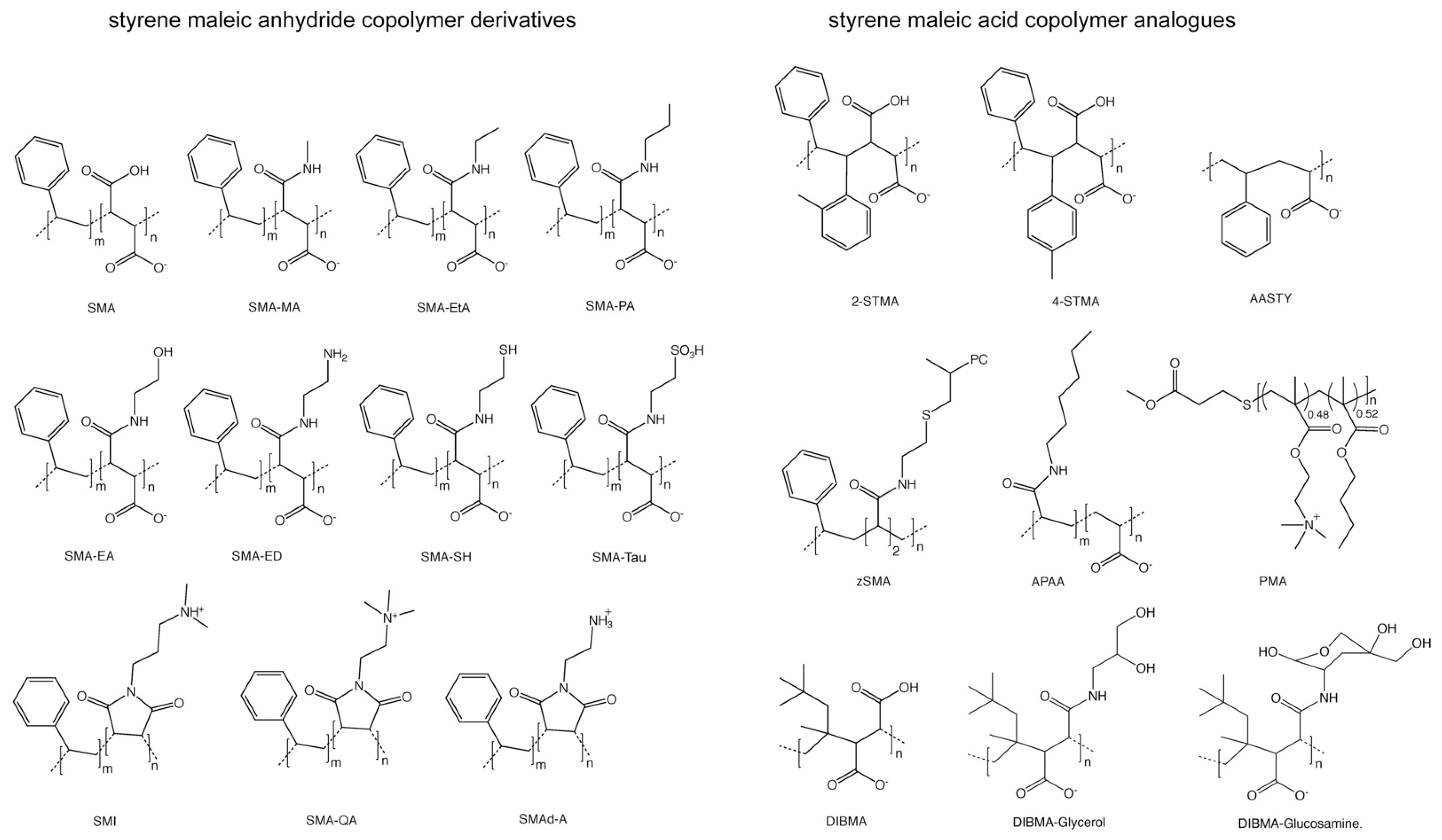
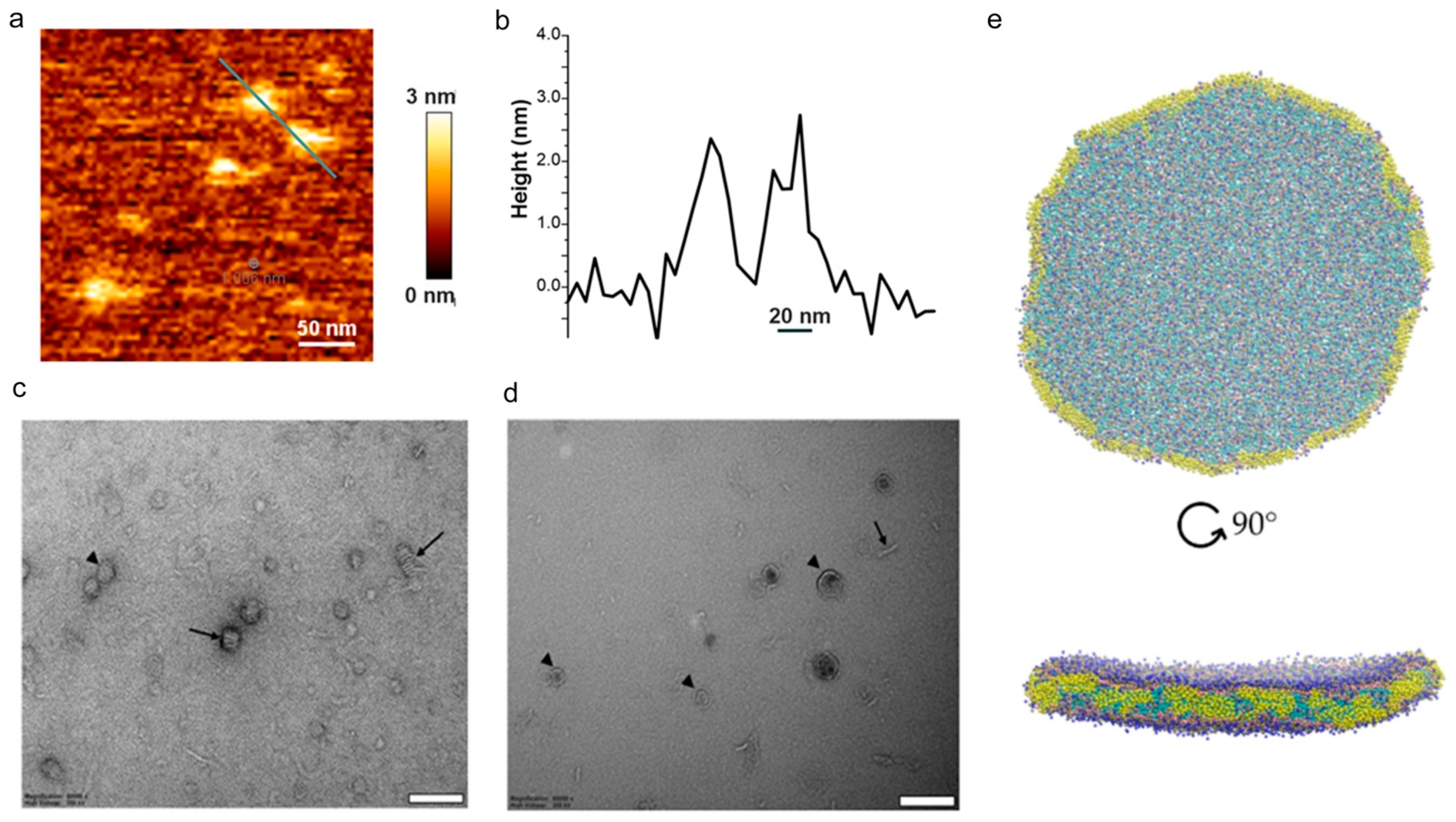

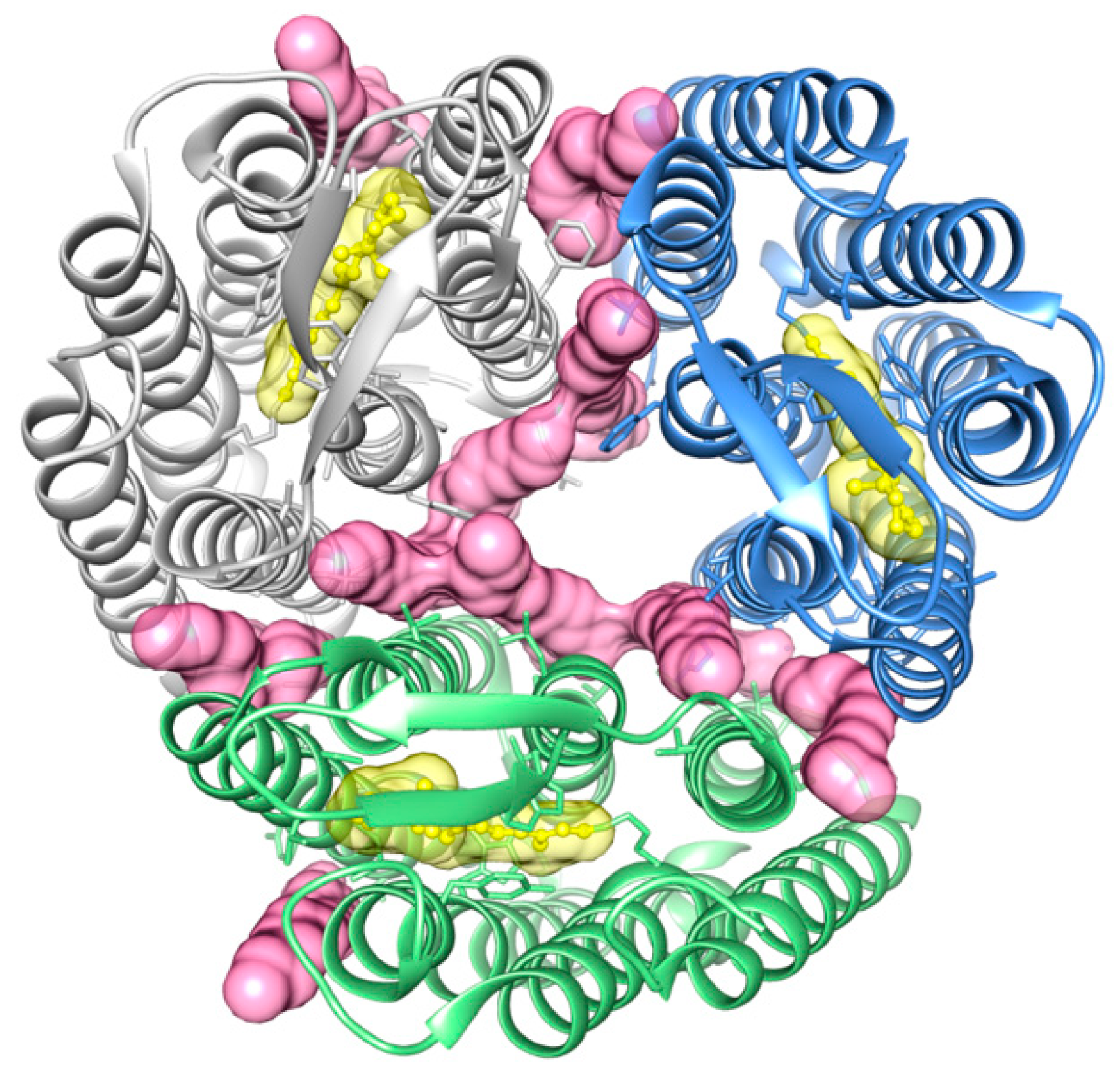
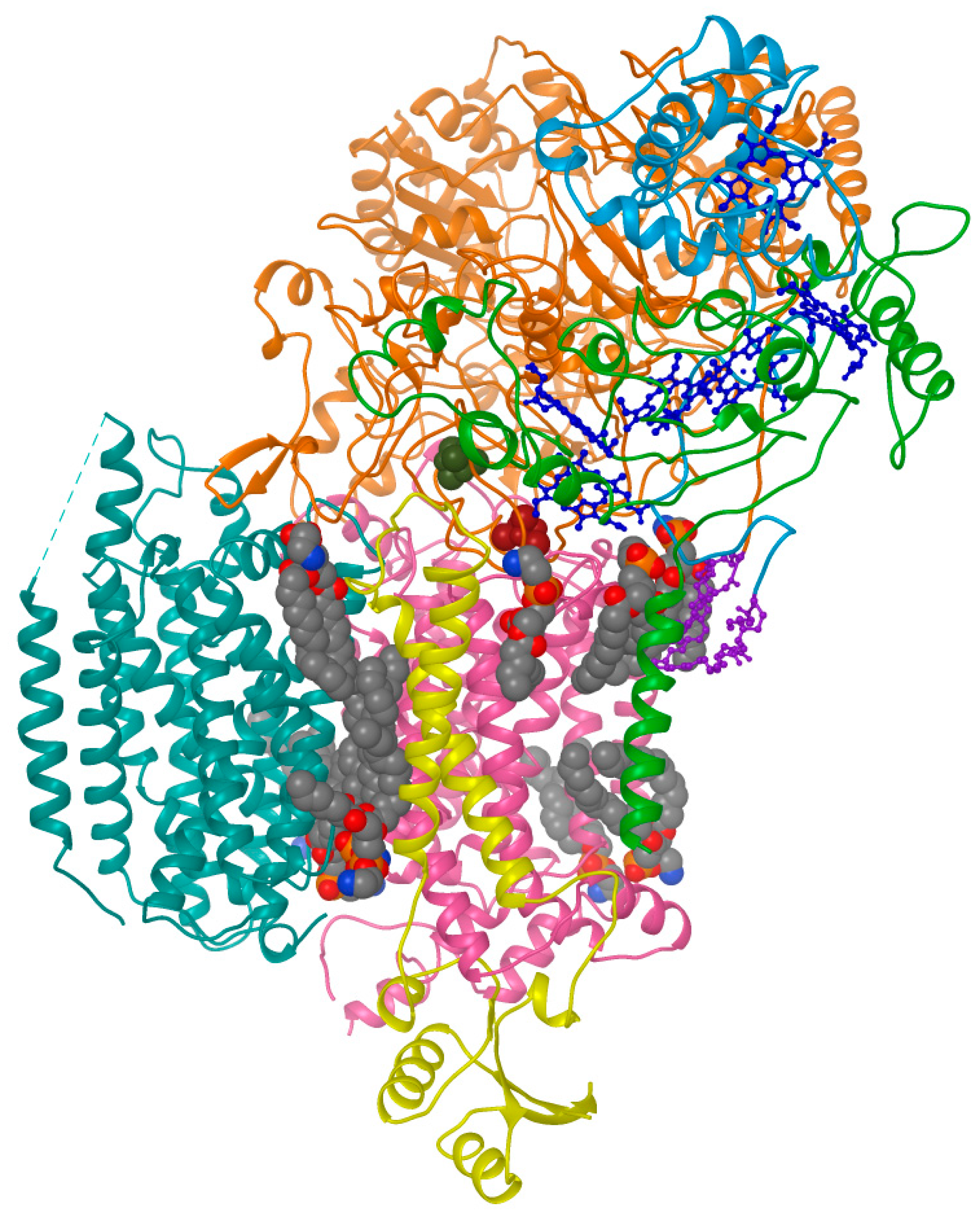
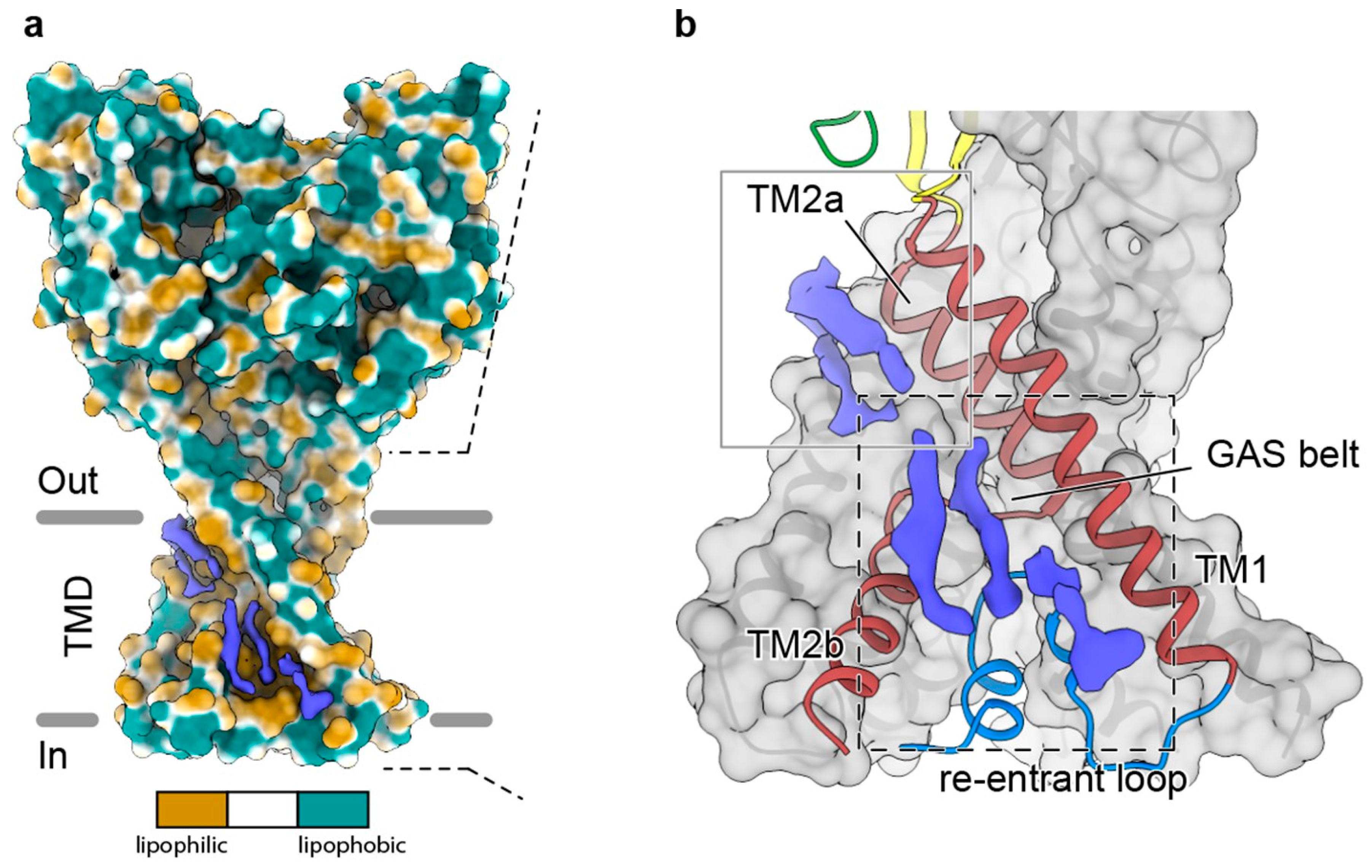
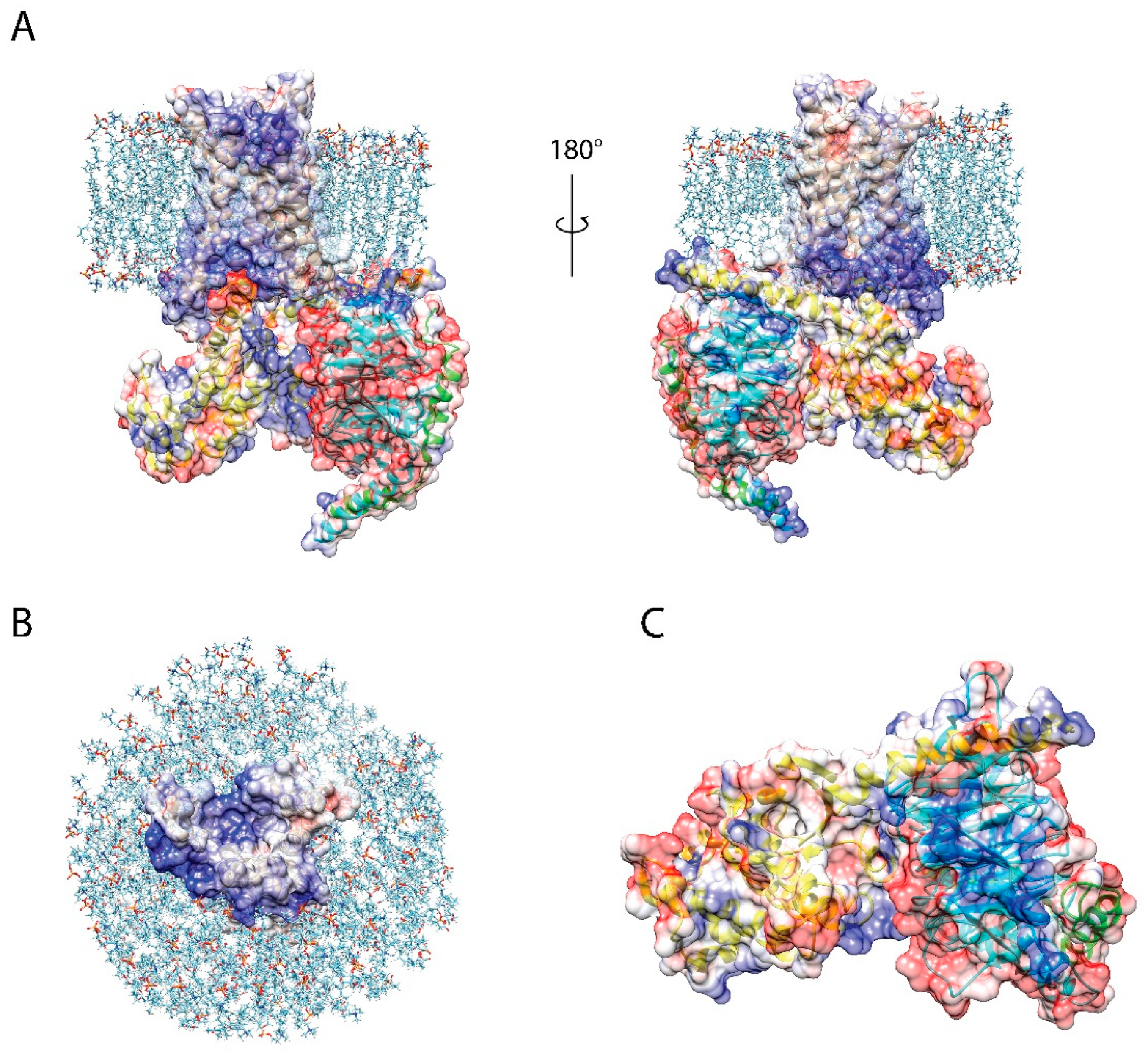
| Protein | Family | MW (kDa) | Subunits | Tag | Host | Copolymer | Assays | Lipids | Ligands | Resol. | Refs. |
|---|---|---|---|---|---|---|---|---|---|---|---|
| A2AR | GPCR | 45 | 1 | Nt-His10 | P. pastoris, HEK 293T | SMA2000, SMI | AUC, CD, 3H-ligand binding, fluorescence spec. | PE, PC | ZM241385, XAC, NECA, theophylline | - | [10,36,37,38] |
| AcrB (E. coli) | transporter | 344 | 3 | Ct-His | E. coli | SMA2000 | cryo-EM | PE | - | 3.0 Å | [53] |
| AcrB (S. typhimurium) | transporter | 341 | 3 | Ct-His | E. coli | SMA | cryo-EM | nd | - | 4.6 Å | [54] |
| Act-A, -B, -C, -D, -E, -F | photosystem | 464 | 6 | F. johnsoniae | SMA3000, SMALP 25010 | cryo-EM | PE | heme, cyt aa3 | 3.4 Å | [55] | |
| AR3 | 7TM | 27 | 3 | - | H. sodomense | SMA3000 | CD, DLS, MS/MS | DMPC, S-DGD, 2DP | retinal | - | [56] |
| ASIC1a (Gallus gallus) | ion channel | 180 | 3 | His-eGFP | HEK293S | SMALP 30010 | cryo-EM | nd | 1H | 2.8 Å | [57] |
| bacteriorhodopsin | 7TM | 27 | 1 | - | H. salinarum | SMA3000 | CD, DLS, MS/MS | DMPC, 2DP | retinal | - | [56] |
| bacteriorhodopsin (R. xylanophilus) | 7TM | 310 | 12 | Ct-His6 | E. coli | SMA2000 | AFM, DLS | E. coli | retinal | - | [58] |
| bacteriorhodopsin (H. w.) | 7TM | 88 | 3 | Ct-(His6)2 | E. coli | SMALP 25010 | LCP-XRD | monoolein | retinal | 2.0 Å | [59] |
| bacteriorhodopsin (N. pharaonis) | 7TM | 76 | 3 | Ct-His6 | E. coli | SMA3000 | EPR | E. coli | retinal | - | [60] |
| bacteriorhodopsin (N. pharaonis) | 7TM | 76 | 3 | Ct-His6 | E. coli | DIBMA | AFM, DLS, EPR, TEM | E. coli | retinal | - | [18,60] |
| β2-adrenoceptor (β2AR) | GPCR | 75 | 1 | Nt-Strep, SNAP | HEK | DIBMA | FRET, PTS | nd | propranolol, isoprenaline | - | [52] |
| Cannabinoid receptor 1 (CB1) | GPCR | 53 | 1 | Nt-FLAG, Ct-GFP, His8 | Sf9 | SMA2000 | DLS, SPR, flow cytometry | nd | antibody | - | [43] |
| Dopamine D1 receptor (D1R) | GPCR | 49 | 2 | Nt-His6 | HEK293f | SMA3000 | 3H, MST-ligand binding, CD | nd | neurotensin peptide, SCH23390 | - | [40] |
| D1R:GHSR | GPCR | 181 | 4 | Nt-(His6)2 | P. pastoris | SMA(2:1) | ligand binding | nd | Gαq, Gβγ | - | [41] |
| GHSR1a | GPCR | 41 | 1 | His | E. coli | SMA2000, SMA3000 | Fluorescence emission | - | Ghrelin, SPA | - | [42] |
| GlyR α1 (H. sapiens) | ion channel | 240 | 5 | Ct-His6 | Xenopus oocytes, HEK293 | SMA3000 | MST | nd | glycine, taurine | - | [61] |
| GlyR α1 (D. rerio) | ion channel | 253 | 5 | Ct-His8 | Sf9 | SMALP 30010 | cryo-EM, SPA | nd | GABA, glycine, taurine | 2.9 Å | [62] |
| KimA | transporter | 136 | 2 | Ct-His10 | E. coli | SMALP 30010 | cryo-EM | nd | K+ (3) | 3.7 Å | [63] |
| MT1R | GPCR | 40 | 1 | His | CHO-K1, P. pastoris | SMA2000, SMA3000 | Fluorescence, ligand binding | - | Gαqβ1γ2, β-arrestin | - | [42] |
| NTSR1 | GPCR | 42.5 | 1 | Nt-FLAG, Ct-eGFP-His10 | Sf9 | PMA | GTPase-Glo | nd | Gi1 and Gq heterotrimers | - | [50] |
| P-glycoprotein (ABCB1) | transporter | 141 | 1,2 | Ct-His12 | Sf9 | SMA2000 | AUC, CD, cryo-EM | nd | ATP, verapamil, doxorubicin | 35 Å | [64] |
| Prion | prion | 28 | fibril | - | brain | SMA-MA | TLC, TEM | PE, PC | - | - | [65] |
| PTH1R | GPCR | 53 | HEK293 | SMA2000 | HDX-MS | nd | antibody | - | [66] | ||
| SLAC1 | ion channel | 190 | 3 | Ct-Flag, His10 | S. pombe | SMA | Cryo-EM, MS/MS, | sphingo- lipid | - | 3.0 Å | [67] |
| TRPM4 | ion channel | 537 | 4 | HEK293 | AASTY | cryo-EM | nd | - | 18 Å | [13] | |
| V1aR | GPCR | 40 | na | HEK 293T | SMI | Ligand binding | nd | vasopressin | - | [10] | |
| YnaI channel | ion channel | 40 | E. coli | DIBMA | cryo-EM | PE/PC | LPC | 3.0 Å | [68] |
| Copolymer | Apolar Subunit | Polar Subunit | Subunit Ratio | Mna (g/mol) | Ða | References |
|---|---|---|---|---|---|---|
| 2-STMA | stilbene | maleic acid | 1:1 | 4400 | 1.19 | [12] |
| 4-STMA | stilbene | maleic acid | 1:1 | 5800 | 1.54 | [12] |
| AASTY | styrene | acrylic acid | 1:1 | 8900 | [13] | |
| APAA | alkyl | acrylic acid | [15] | |||
| DIBMA | alkyl | maleic acid | 1:1 | 8500 | 1.4 | [17] |
| DIBMA glucosamine | alkyl | maleamic acid-glucose | 1:1 | Cube Biotech (CB) | ||
| DIBMA glycerol | alkyl | maleamic acid-propanediol | 1:1 | CB | ||
| PMA | butyl acrylate | acetylcholine | 1:1.1 | 6900 | [16] | |
| SMA2000 | styrene | maleic acid | 2:1 | 3000 | 2.5 | [4] |
| SMA3000 | styrene | maleic acid | 3:1 | 3800 | 2.5 | [4] |
| SMA-EA | styrene | maleamic acid-ethanolamine | 1.3:1 | 1600 | [6] | |
| SMA-ED | styrene | maleamic acid-ethylene-diamine | 1.3:1 | 1600 | [7] | |
| SMA-EtA | styrene | maleamic acid-ethylamine | 1:1 | [5] | ||
| SMA-MA | styrene | maleamic acid-methylamine | 1:1 | [5] | ||
| SMA-PA | styrene | maleamic acid-propylamine | 1:1 | [5] | ||
| SMA-QA | styrene | maleimide-ethyl-trimethylammonium | 1.3:1 | 1600 | [11] | |
| SMA-SH | styrene | maleamic acid-cysteamine | 2:1 | [8] | ||
| SMA-Tau/NCMNP7 | styrene | maleamic acid-taurine | 2:1 | 2.5 | [9] | |
| SMAd-A | styrene | maleimide-ethanolamine | 1.3:1 | 1600 | [7] | |
| SMALP 1100I | styrene | maleimide-propyl-dimethylamine | 1.4:1 | 5000 | 2.5 | CB, Orbiscope |
| SMALP 25010 | styrene | maleic acid | 3:1 | 4000 | 2.5 | CB, Orbiscope, [4] |
| SMALP 30010 | styrene | maleic acid | 2.3:1 | 2500 | 2.6 | CB, Orbiscope, [4] |
| SMALP 40005 | styrene | maleic acid | 1.2:1 | 2000 | 2.5 | CB, Orbiscope |
| SMALP 502-E | styrene | esterified maleic acid | 1.5:1 | CB, Orbiscope | ||
| SMI | styrene | maleimide-propyl-dimethylamine | 2:1 | 2700 | 2.8 | [10] |
| zSMA1 | styrene | phosphatidylcholine | 1.1 | [14] | ||
| zSMA2 | styrene | phosphatidylcholine | 35,000 | 1.17 | [14] | |
| zSMA3 | styrene | phosphatidylcholine | 53,000 | 1.19 | [14] |
Publisher’s Note: MDPI stays neutral with regard to jurisdictional claims in published maps and institutional affiliations. |
© 2021 by the authors. Licensee MDPI, Basel, Switzerland. This article is an open access article distributed under the terms and conditions of the Creative Commons Attribution (CC BY) license (https://creativecommons.org/licenses/by/4.0/).
Share and Cite
Overduin, M.; Trieber, C.; Prosser, R.S.; Picard, L.-P.; Sheff, J.G. Structures and Dynamics of Native-State Transmembrane Protein Targets and Bound Lipids. Membranes 2021, 11, 451. https://doi.org/10.3390/membranes11060451
Overduin M, Trieber C, Prosser RS, Picard L-P, Sheff JG. Structures and Dynamics of Native-State Transmembrane Protein Targets and Bound Lipids. Membranes. 2021; 11(6):451. https://doi.org/10.3390/membranes11060451
Chicago/Turabian StyleOverduin, Michael, Catharine Trieber, R. Scott Prosser, Louis-Philippe Picard, and Joey G. Sheff. 2021. "Structures and Dynamics of Native-State Transmembrane Protein Targets and Bound Lipids" Membranes 11, no. 6: 451. https://doi.org/10.3390/membranes11060451
APA StyleOverduin, M., Trieber, C., Prosser, R. S., Picard, L.-P., & Sheff, J. G. (2021). Structures and Dynamics of Native-State Transmembrane Protein Targets and Bound Lipids. Membranes, 11(6), 451. https://doi.org/10.3390/membranes11060451






